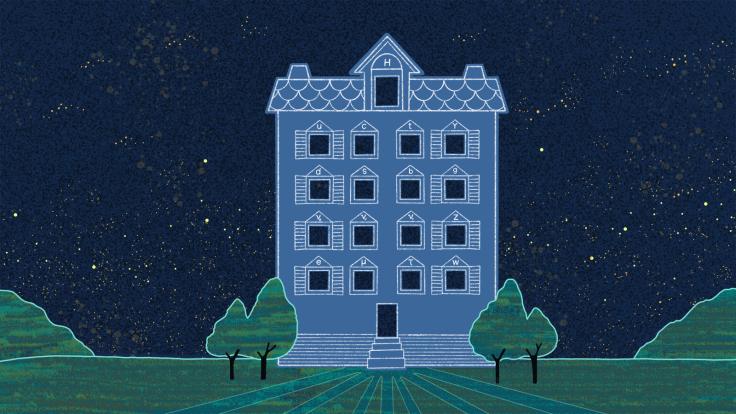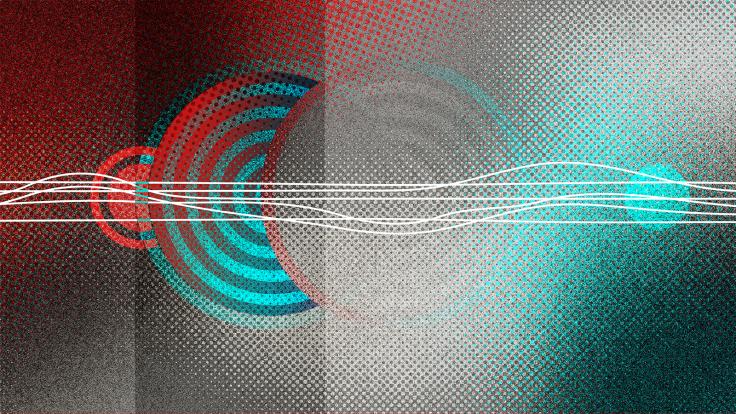One of the great puzzles for scientists is why there is more matter than antimatter in the universe—the reason we exist.
It turns out that the answer to this question is deeply connected to the breaking of fundamental conservation laws of particle physics. The discovery of these violations has a rich history, dating back to 1956.
Parity violation
It all began with a study led by scientist Chien-Shiung Wu of Columbia University. She and her team were studying the decay of cobalt-60, an unstable isotope of the element cobalt. Cobalt-60 decays into another isotope, nickel-60, and in the process, it emits an electron and an electron antineutrino. The nickel-60 isotope then emits a pair of photons.
The conservation law being tested was parity conservation, which states that the laws of physics shouldn’t change when all the signs of a particle’s spatial coordinates are flipped. The experiment observed the decay of cobalt-60 in two arrangements that mirrored one another.
The release of photons in the decay is an electromagnetic process, and electromagnetic processes had been shown to conserve parity. But the release of the electron and electron antineutrino is a radioactive decay process, mediated by the weak force. Such processes had not been tested in this way before.
Parity conservation dictated that, in this experiment, the electrons should be emitted in the same direction and in the same proportion as the photons.
But Wu and her team found just the opposite to be true. This meant that nature was playing favorites. Parity, or P symmetry, had been violated.
Two theorists, Tsung Dao Lee and Chen Ning Yang, who had suggested testing parity in this way, shared the 1957 Nobel Prize in physics for the discovery.
Charge-parity violation
Many scientists were flummoxed by the discovery of parity violation, says Ulrich Nierste, a theoretical physicist at the Karlsruhe Institute of Technology in Germany.
“Physicists then began to think that they may have been looking at the wrong symmetry all along,” he says.
The finding had ripple effects. For one, scientists learned that another symmetry they thought was fundamental—charge conjugation, or C symmetry—must be violated as well.
Charge conjugation is a symmetry between particles and their antiparticles. When applied to particles with a property called spin, like quarks and electrons, the C and P transformations are in conflict with each other.
“Physicists then began to think that they may have been looking at the wrong symmetry all along.”
This means that neither can be a good symmetry if one of them is violated. But, scientists thought, the combination of the two—called CP symmetry—might still be conserved. If that were the case, there would at least be a symmetry between the behavior of particles and their oppositely charged antimatter partners.
Alas, this also was not meant to be. In 1964, a research group led by James Cronin and Val Fitch discovered in an experiment at Brookhaven National Laboratory that CP is violated, too.
The team studied the decay of neutral kaons into pions; both are composite particles made of a quark and antiquark. Neutral kaons come in two versions that have different lifetimes: a short-lived one that primarily decays into two pions and a long-lived relative that prefers to leave three pions behind.
However, Cronin, Fitch and their colleagues found that, rarely, long-lived kaons also decayed into two instead of three pions, which required CP symmetry to be broken.
The discovery of CP violation was recognized with the 1980 Nobel Prize in physics. And it led to even more discoveries.
It prompted theorists Makoto Kobayashi and Toshihide Maskawa to predict in 1973 the existence of a new generation of elementary particles. At the time, only two generations were known. Within a few years, experiments at SLAC National Accelerator Laboaratory found the tau particle—the third generation of a group including electrons and muons. Scientists at Fermi National Accelerator Laboratory later discovered a third generation of quarks—bottom and top quarks.
Digging further into CP violation
In the late 1990s, scientists at Fermilab and European laboratory CERN found more evidence of CP violation in decays of neutral kaons. And starting in 1999, the BaBar experiment at SLAC and the Belle experiment at KEK in Japan began to look into CP violation in decays of composite particles called B mesons
By analyzing dozens of different types of B meson decays, scientists on BaBar and Belle revealed small differences in the way B mesons and their antiparticles fall apart. The results matched the predictions of Kobayashi and Maskawa, and in 2008 their work was recognized with one half of the physics Nobel Prize.
“But checking if the experimental data agree with the theory was only one of our goals,” says BaBar spokesperson Michael Roney of the University of Victoria in Canada. “We also wanted to find out if there is more to CP violation than we know.”
This is because these experiments are seeking to answer a big question: Why are we here?
When the universe formed in the big bang 14 billion years ago, it should have generated matter and antimatter in equal amounts. If nature treated both exactly the same way, matter and antimatter would have annihilated each other, leaving nothing behind but energy.
And yet, our matter-dominated universe exists.
CP violation is essential to explain this imbalance. However, the amount of CP violation observed in particle physics experiments so far is a million to a billion times too small.
Current and future studies
Recently, BaBar and Belle combined their data treasure troves in a joint analysis1First observation of CP violation in B0->D(*)CP h0 decays by a combined time-dependent analysis of BaBar and Belle data. It revealed for the first time CP violation in a class of B meson decays that each experiment couldn't have analyzed alone due to limited statistics.
This and all other studies to date are in full agreement with the standard theory. But researchers are far from giving up hope on finding unexpected behaviors in processes governed by CP violation.
The future Belle II, currently under construction at KEK, will produce B mesons at a much higher rate than its predecessor, enabling future CP violation studies with higher precision.
And the LHCb experiment at CERN’s Large Hadron Collider is continuing studies of B mesons, including heavier ones that were only rarely produced in the BaBar and Belle experiments. The experiment will be upgraded in the future to collect data at 10 times the current rate.
To date, CP violation has been observed only in particles like these ones made of quarks.
“We know that the types of CP violation already seen using some quark decays cannot explain matter’s dominance in the universe,” says LHCb collaboration member Sheldon Stone of Syracuse University. “So the question is: Where else could we possibly find CP violation?”
One place for it to hide could be in the decay of the Higgs boson. Another place to look for CP violation is in the behavior of elementary leptons—electrons, muons, taus and their associated neutrinos. It could also appear in different kinds of quark decays.
“To explain the evolution of the universe, we would need a large amount of extra CP violation,” Nierste says. “It’s possible that this mechanism involves unknown particles so heavy that we’ll never be able to create them on Earth.”
Such heavyweights would have been produced last in the very early universe and could be related to the lack of antimatter in the universe today. Researchers search for CP violation in much lighter neutrinos, which could give us a glimpse of a possible large violation at high masses.
The search continues.













